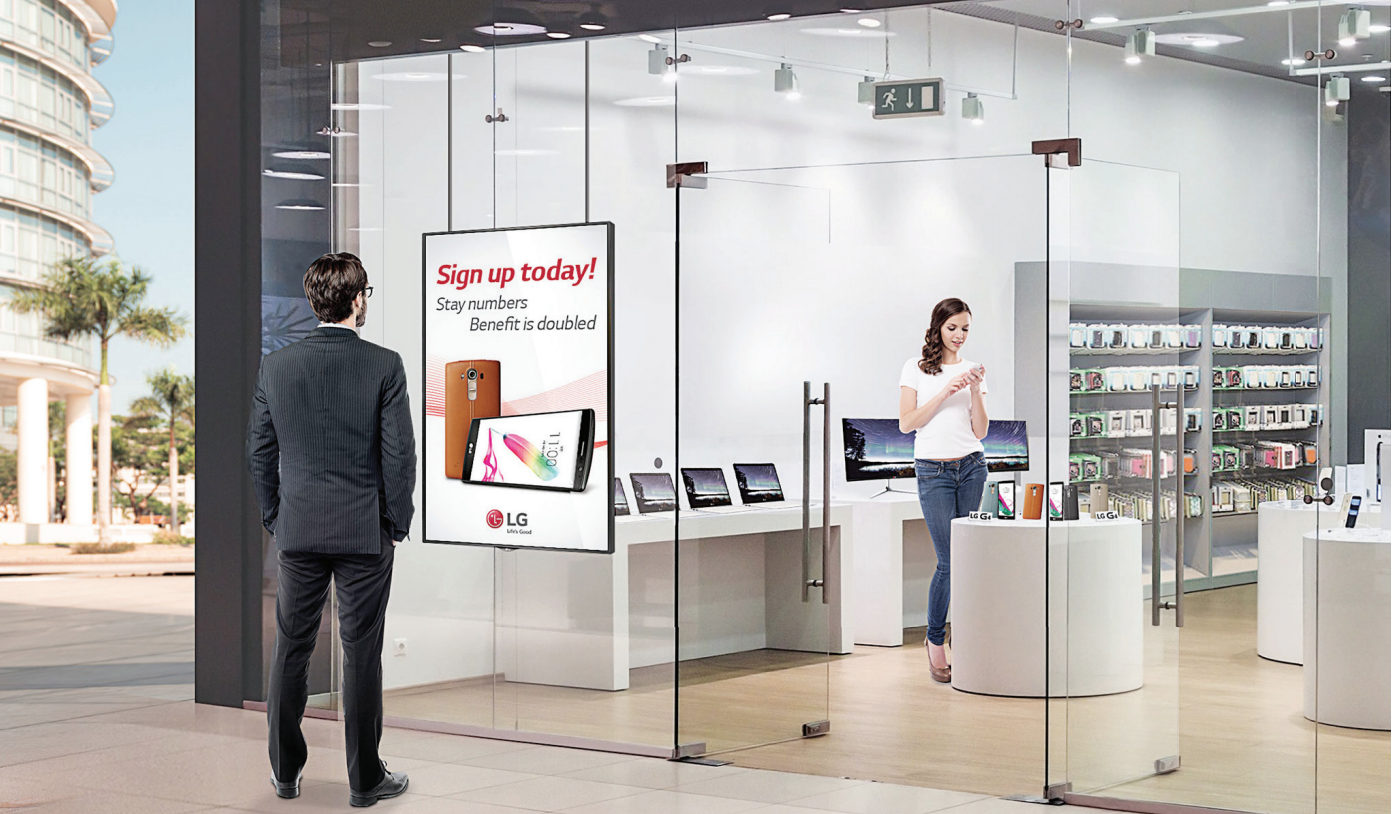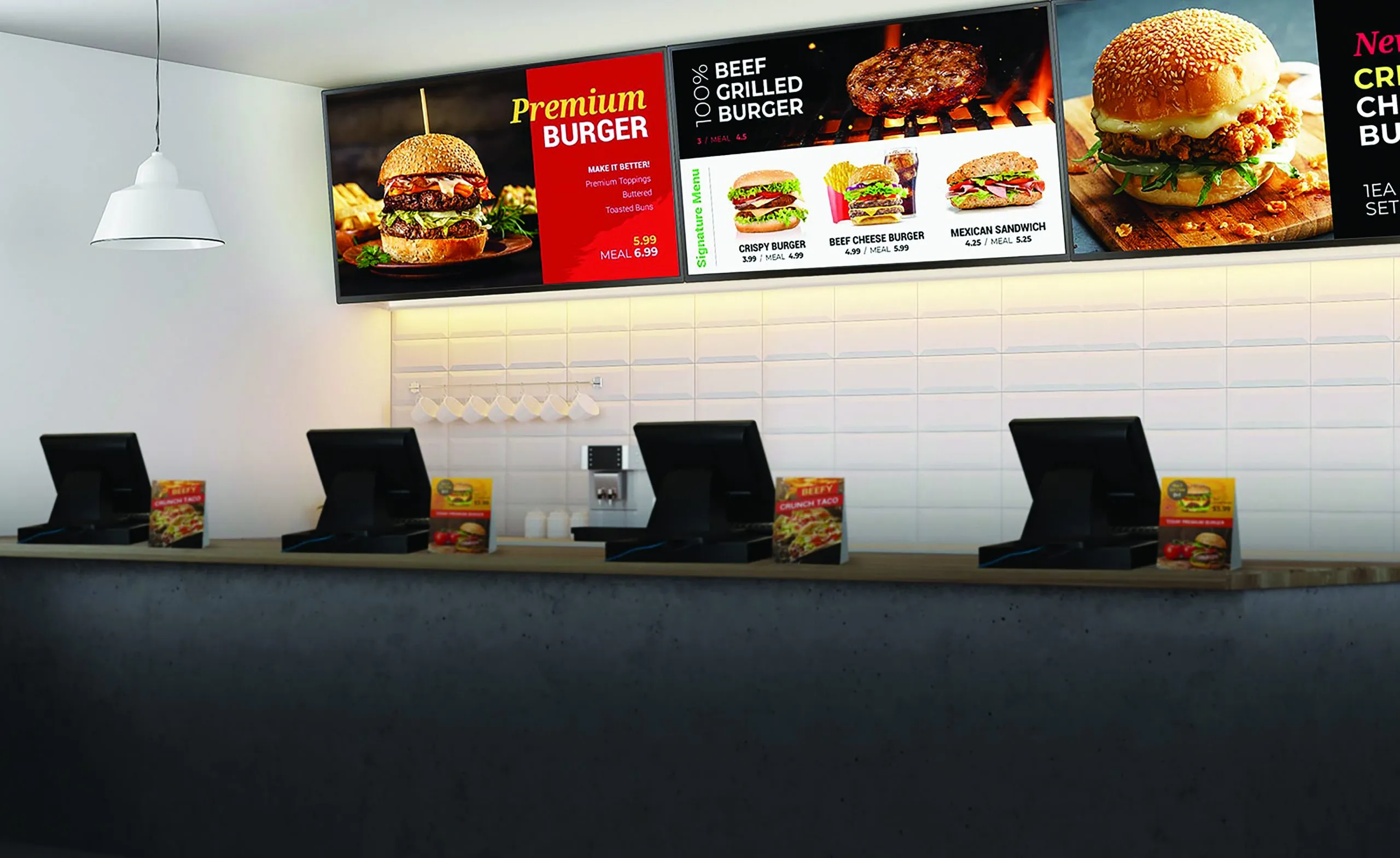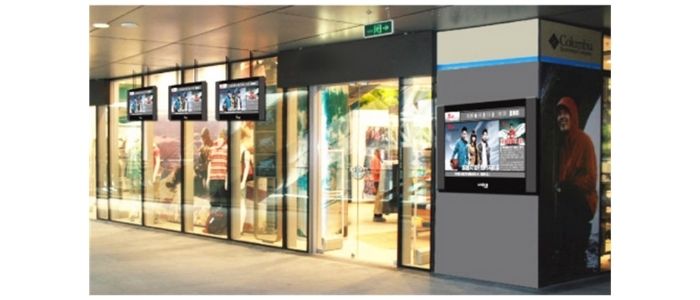What is Digital Signage?
Digital signage is a contemporary method for disseminating information, serving as a centralized platform to control information distribution. A digital signage system is used to broadcast information such as business, finance, and entertainment to one or more displays. It can display many types of information, such as text, advertisements, images, news, videos, menus, flights, calendars, real-time weather, and TV. It is widely used in business, public places, transportation, and many other fields.
What is Digital Signage used for?
Digital signage is employed across various industries, offering advantages such as efficiency, real-time capabilities, interactivity, and personalization. It facilitates instantaneous updates and information releases, enhancing the speed and breadth of information dissemination. Interactive features capture the audience’s attention, improving the acceptance and comprehension of information. Moreover, the digital signage system is customizable to personalize content and presentation based on diverse needs and scenarios, thereby enhancing the relevance and effectiveness of conveyed information.

Digital Signage Integration
A digital signage display system comprises the following components:
- Display Equipment: This includes devices such as liquid crystal displays, organic light-emitting diode displays, projectors, etc. These devices can showcase diverse forms of digital content, ranging from text and images to videos.
- Information Distribution System: Responsible for transmitting information to the display devices, this system can either store information locally or retrieve it from a remote server via the network.
- Network Transmission Equipment: Encompassing routers, switches, and other network devices, this equipment is essential for transmitting information to each display device efficiently.
- Digital Signage Software: Serving as the core of the digital signage system, the software enables operations such as editing, auditing, and publishing of digital information. It also provides monitoring and management functionalities for each device.
Selecting the Optimal Digital Signage System
A Digital Signage System is specialized system management software designed for content creation, playlist organization, and player management within digital signage applications. Key attributes of an effective digital signage CMS platform encompass:
- Permission Management: Assigning varying rights to different users for the use and control of terminal display devices.
- Element Management: Allowing users to add, modify, and delete elements such as media, news, and other content.
- Download or Streaming Media Management: Enabling users to add, modify, delete media files, or manage streaming media downloads and real-time playback.
- Playlist Management: Empower users to customize the chronological order of media playback, reserve playback times, and perform sorting operations.
- Playback Terminal Management: Allowing users to oversee network advertising machine terminals by controlling play, stop, pause, volume adjustment, IP address, timer settings, video layout, web page layout, and other media playback configurations. These settings should be dynamically adjustable.
- Playback Terminal Status Display: Providing insight into the online status of playback terminals (network advertising machines), including disk information, playback order, downloads, and more.
Application of Digital Signage
The digital signage system is extensively utilized across diverse sectors, including commercial advertisement, public transportation, hospital guidance, scenic spot navigation, and more. In commercial advertising, the digital signage system employs dynamic and three-dimensional presentations to engage consumers and showcase advertising information. In public transportation, it provides real-time information such as vehicle arrival times and weather updates. Within hospital environments, the digital signage display system furnishes details on patients’ consultation processes and department distribution. In scenic areas, it serves as a guide by offering information such as attraction introductions and map guidance.
Common Types of Digital Signage Solutions:
- Public: Location-specific information (news, weather, road conditions), maps, and wayfinding.
- Corporate: Knowledge sharing, meeting room booking, meeting coordination, training.
- Sales: Product/service portfolios, whiteboards, presentations.
- Travel: Wayfinding, attractions, city information.
- Retail: Self-checkout, endless aisles, product displays, smart mirrors.
- Restaurants: Self-service, digital menu boards, self-ordering kiosks.
- Marketing: Promotions, ambiance, gamification.
- Museums: Galleries, wayfinding, digital tours.
- Education: Classroom instruction, wayfinding, library exhibits.
- Exhibits and Trade Shows: Interactive product/service catalogs, visitor registration, networking.

Why Use Digital Signage?
Digital signage has gained popularity in the marketplace primarily due to the dynamic nature of regularly updatable content and materials, coupled with the ability to interact with the real world through features like image capture, gesture awareness, and embedded touch displays. These aspects offer users considerable flexibility and usability. The key benefits of employing digital signage include:
- Enhancing Brand Image: The high-tech appearance and interactive experience, incorporating popular elements from movies, music, and motion pictures, satisfy user consumption pleasure and elevate brand image awareness and recognition.
- Saving Advertising Costs: In comparison to traditional posters and banners, digital signage eliminates concerns about costs related to printing, transportation, replacement, and storage. It allows for a seamless process from design to broadcast.
- Richer Display Forms: Digital signage provides clearer display effects, supporting both static and dynamic forms, thereby enabling more creative advertisements.
- More Efficient Information Dissemination: Video and sound can be disseminated faster, reaching a wider audience and leaving a more memorable impact. Beyond advertisements, digital signage effectively communicates additional beneficial information such as weather updates and clock reminders.
- Optimizing Store Management: Customized intelligent programs significantly enhance store operation and management efficiency. Features like a one-click publishing system in the digital signage backstage, customer evaluation systems, queuing management systems, and more contribute to streamlined operations.
Beten Digital Signage
As a globally recognized provider of digital signage displays, Beten has been actively involved in the commercial LCD screen display sector for over 16 years. Operating in more than 60 countries across Europe, America, Southeast Asia, and South Africa, Beten has served over 3,000 customers. The smart digital signage solutions offered by Beten have found widespread applications in various industries, including catering, finance, telecommunications, healthcare, shopping malls, supermarkets, hotels, and enterprises, providing numerous opportunities for major sectors.
With digital display screens omnipresent, the trajectory of digital signage is evolving toward greater personalization and intelligence. Beten adopts a forward-looking strategic approach, delving into commercial display application scenarios, fostering innovation, and enhancing the digital signage product portfolio. This commitment aims to bring increased convenience to modern society in terms of information dissemination and daily life.
For further information or to engage with a member of our sales team, please contact us today.








